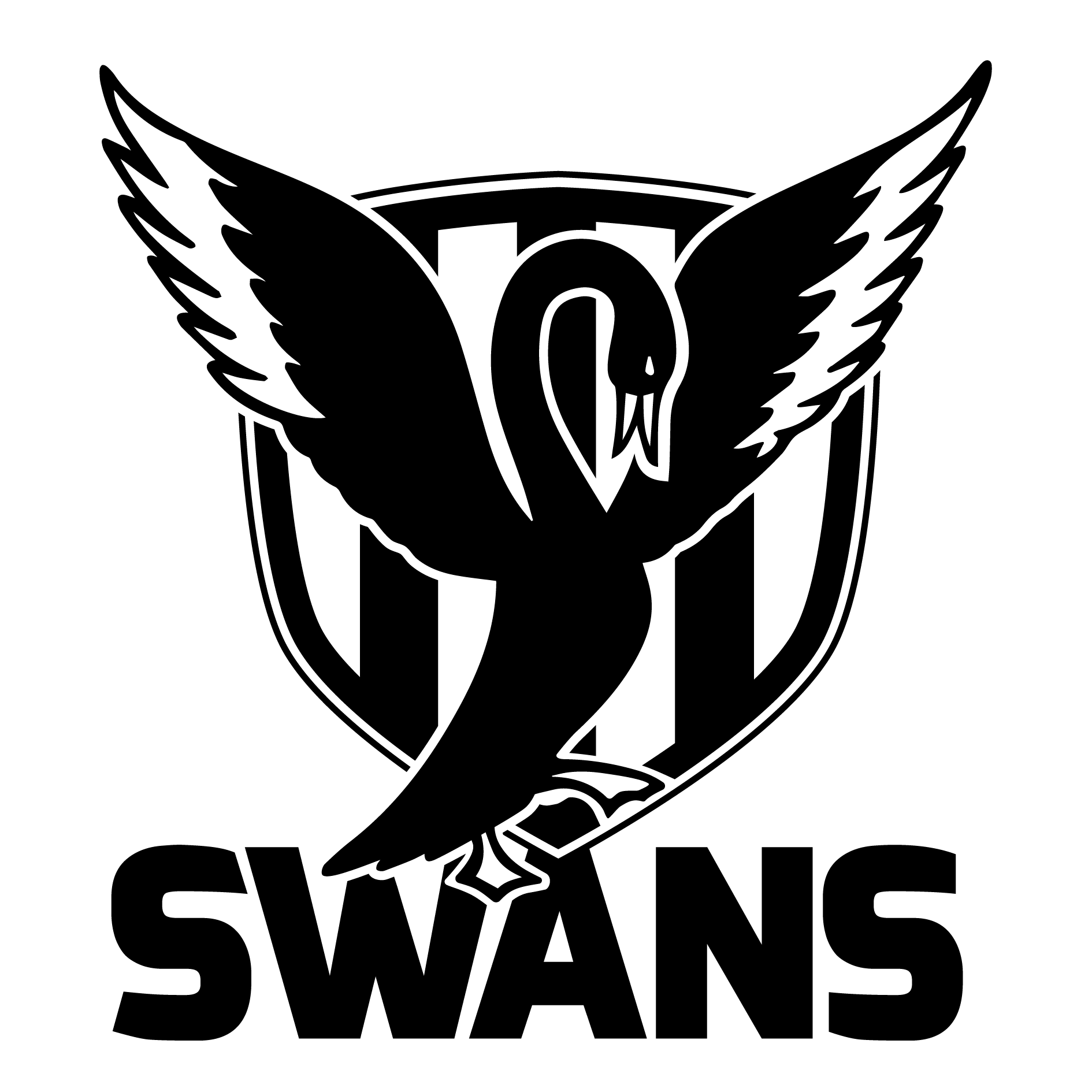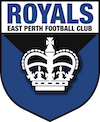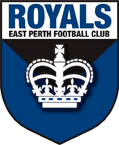Select grade below
- Round 1Sat Mar 3014:30
 6.7.43VS
6.7.43VS 12.10.82
View Stats
12.10.82
View Stats - Round 2Sat Apr 0614:30
 18.11.119VS
18.11.119VS 11.16.82
View Stats
11.16.82
View Stats - Round 3Sat Apr 1313:40
 10.9.69VS
10.9.69VS 8.5.53
View Stats
8.5.53
View Stats - Round 6Sun May 0511:10
 VS
VS
 Sullivan Logistics Stadium
Sullivan Logistics Stadium - Round 7Sat May 1114:40
 VS
VS
 East Fremantle Oval
East Fremantle Oval - Round 8Sat May 2514:10
 VS
VS
 Sullivan Logistics Stadium
Sullivan Logistics Stadium - Round 9Mon Jun 0314:30
 VS
VS
 Pentanet Stadium
Pentanet Stadium - Round 10Sun Jun 0914:10
 VS
VS
 Sullivan Logistics Stadium
Sullivan Logistics Stadium - Round 11BYE

- Round 12Sat Jun 2214:10
 VS
VS
 Steel Blue Oval
Steel Blue Oval - Round 13Sat Jun 2914:30
 VS
VS
 Sullivan Logistics Stadium
Sullivan Logistics Stadium - Round 14Sat Jul 0614:30
 VS
VS
 Sullivan Logistics Stadium
Sullivan Logistics Stadium - Round 15BYE

- Round 16Sat Jul 2014:30
 VS
VS
 Sullivan Logistics Stadium
Sullivan Logistics Stadium - Round 17Sat Jul 2714:30
 VS
VS
 Revo Fitness Stadium
Revo Fitness Stadium - Round 18Sat Aug 0314:30
 VS
VS
 Sullivan Logistics Stadium
Sullivan Logistics Stadium - Round 19Sat Aug 1011:10
 VS
VS
 Mineral Resources Park
Mineral Resources Park - Round 20Sat Aug 1714:30
 VS
VS
 Sullivan Logistics Stadium
Sullivan Logistics Stadium - Round 21Sun Aug 2514:30
 VS
VS
 Sullivan Logistics Stadium
Sullivan Logistics Stadium
The History of Open-Air Pictures, East Perth Picture Gardens and the Premier Theatre By Bill Forrest

It is hard to imagine that 100 years ago the club was promoting an open-air picture show as a means of raising income funds.
In 1910, the club moved from Wellington Square grounds to Perth Oval and in late 1911 introduced an open-air picture show at Perth Oval, every Saturday evening during the summer months. Admission was sixpence, and children were admitted for half price. Players received complimentary tickets. In the first year of operation, the picture show in the club’s financial statements showed a profit of £13/5/5.
It is interesting to note and compare some of the costs associated with the running of the pictures when compared with the costs of living standards today.
- The Optical Supply Co. provided a program of pictures for £3/10/- per night.
- The Union Publishing Co. provided 1,500 free programs, which gave them the right of advertising on the screen for 17/6d per week.
- A Mr. Ford successfully tendered for the refreshment stall rights at 15/- a night.
- A policeman was engaged from 7.30pm to 9 pm at the rate of 4/- per night.
- The Salvation Army was given a donation of 5/- ever Saturday night.
- The Y.A.L. World Touring Band played every Saturday night for a fee of £4/4/-
The picture show was advertised every Saturday morning in the ‘West Australian’ under Amusements. In 1911, the Subiaco Football Club was also showing pictures at Subiaco Oval.
The silent films being advertised as showing at various venues included “The Battle of Waterloo," “The Power of the Cross," “When the Roses Wither," “The Tiger Lily” “Toothache Martyr," “Out of the Jaws of Death," which all sounds like very gripping entertainment. The picture goers of those early years could never have imagined the multi-million costing films such as the “Titanic."
In 1920, the pictures were being shown twice a week. This fundraising venture continued until 1922, when difficulties with the Perth City Council regarding the lease deprived the Club of the rights to use the Oval in the summer months.
In 1923, club members Bill Haynes (President) and committee members Joe Burt and Ben Wallish provided the finance to construct the East Perth Picture Gardens on vacant land in Bulwer Street, near the corner of Smith Street and opposite Perth Oval. This enabled the club to retain some interest in the showing of picture entertainment in East Perth.
The setting up of the picture gardens wasn’t without some frustrations in obtaining permission from the Perth City Council. At a meeting of the Council on 22nd October 1923, the following proposal was adopted – That Messrs Haynes, Wallish and Burt are required to erect a brick front to the picture gardens. The following criticism was stated by the councillors - Cr. Bull thought the residents should be considered in connection with a 'contraption of this kind.' He moved that effect be given, to the resolution passed previously that the land be resumed that compensation be given to the proprietors for the buildings, and they be given a three years' lease of the Perth Oval Pictures.
Cr. Baker, seconding the amendment said that the picture show in Bulwer Street had never been wanted. Other councillors described it as more or less of an eye-sore. Others again said that the Perth Oval picture gardens presented just as ugly an appearance.
Cr. Rea moved a further amendment that the proprietors be allowed to continue where they were for another 12 months, this giving the residents a chance to express their views in the matter.
Cr. Butt seconded the amendment. He said that the biggest objection to the picture show in Bulwer-street was Sunday screenings, and the lessees had agreed not to open the place on Sunday.
Cr. Watts supported the recommendation as printed. Cr. Bull's amendment was put, and lost on a division. Cr. Rea's further amendment, that the permit be extended for another 12 months, became the motion, and was carried.
Messrs. Haynes, Wallish and Burt were required to pay the council a rent, of £156 per annum for the balance of the term of the lease.
The Picture Gardens continued to operate and provide some income to the club.
In 1925, the Premier Theatre was built in the name of East Perth. The finance to build the theatre was obviously provided by the Club President Bill Haynes.
The club’s annual report of 1925 stated – A fine theatre is being erected on the corner of Bulwer and Stirling Streets, and the entertainment will be carried out there during the winter months. This is a very big undertaking indeed, but those in a position to judge have entered into this movement with confidence that a great asset is being built up, and have in mind the future of the club, particularly looking at the time when Perth has advanced to the size of some of the Eastern cities, and the National game has moved with the times. We sincerely believe that a great work has been commenced, and faithfully appeal to members for their support, attendance and encouragement.
On November 16, 1926, a Deed of Release was drawn up between The East Perth Football Club and W.R.Haynes Esq., Which read in part as follows-Members of the Committee of Management of and for and on behalf of the East Perth Football Club (hereinafter referred to as “The Committee”} of one part AND William Radden Haynes of Cleaver Street Perth aforesaid of the other part:
Whereas the said William Radden Haynes and the East Perth Football Club have for some years past been carrying on in conjunction a Cinematograph Business at the Premier Theatre at the corner of Bulwer Street and Stirling Street Perth aforesaid and as an open-air entertainment near Perth Oval known as the “East Perth Picture Gardens” and no agreement in writing has been entered into between them.
And whereas the said Premier Theatre is the property of the said William Radden Haynes, and he has managed and largely financed the undertaking, but no proper and regular accounts have been kept between the said William Radden Haynes and the East Perth football Club.
And whereas at a properly constituted meeting of the Committee of Management of the said Club held on the Sixteenth day of November One thousand nine hundred and twenty six it was agreed and resolved that on payment by the said William Radden Haynes of the sum of ONE THOUSAND POUNDS the said Club should relinquish, assign and release to the said William Radden Haynes all its rights title estate and interest whatsoever of in and concerning the said Cinematograph Business so carried on as aforesaid and the Committee parties hereto of the first part were at the said meeting authorised to enter into these presents for and behalf of the said East Perth Football Club.
The deed was signed on behalf of the club by J Mitchell Treasurer and A W Gordon, witnessed by W H Lofts.
The following memo appeared on the bottom of the deed:
The above mentioned sum of ONE THOUSAND POUNDS has been paid and satisfied by the said William Radden Haynes (at the request of the East Perth Football Club pursuant to a resolution passed by the Committee of Management) by placing that amount on fixed deposit for six months at the Commercial Bank in his name as Trustee for the Club. The Bank’s receipt is now in the possession of the Club’s Treasurer. J Mitchell.
The signing of the deed ended another chapter in the history of the East Perth Football Club.
It is interesting to note that the £1,000.00 placed the club in a secure financial position during the depression years.
The Club secretary Cyril Norton retired in February 1927, and he took over managing the Premier Theatre. When Bill Haynes died in 1945, his will stated that if Cyril Norton paid the probate of his estate, he could have the theatre and gardens. The probate was paid, and the theatre and gardens became the property of the Norton’s.
Cyril Norton died in 1953, and his son Graeme now manages the business. Since 1963, the theatre has undergone several changes, first as an ice rink and, then as a disco before being demolished and replaced by an office block in 1987.
In an endeavour to record the history of the theatre Graeme Norton approached the Town of Vincent to seek their approval to have a plaque placed in the pavement on the corner of
Bulwer and Stirling streets detailing the history of the Premier Theatre. The Town agreed, and the plaque is now in place.























